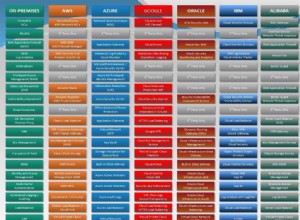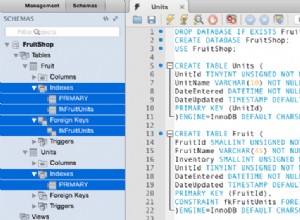Tout d'abord, veuillez corriger le modèle afin que les collections aient des noms pluriels et que les objets aient des noms uniques, sinon votre code deviendra très confus :
building.cs
public List<Battery> Batteries { get; set; }
battery.cs
public long BuildingId { get; set; }
public Building Building { get; set; }
public List<Column> Columns { get; set; }
column.cs
public long BatteryId { get; set; }
public Battery Battery { get; set; }
public List<Elevator> Elevators { get; set; }
elevator.cs
public long ColumnId { get; set; }
public Column Columns { get; set; }
Ajoutons maintenant quelques propriétés supplémentaires au modèle afin qu'il puisse nous renseigner sur les interventions :
building.cs
public List<Battery> Batteries { get; set; }
[NotMapped]
public bool IsInIntervention => this.Status == "Intervention" || Batteries.Any(b => b.IsInIntervention);
battery.cs
public long BuildingId { get; set; }
public Building Building { get; set; }
public List<Column> Columns { get; set; }
[NotMapped]
public bool IsInIntervention => this.Status == "Intervention" || Columns.Any(c => c.IsInIntervention);
column.cs
public long BatteryId { get; set; }
public Battery Battery { get; set; }
public List<Elevator> Elevators { get; set; }
[NotMapped]
public bool IsInIntervention => this.Status == "Intervention" || Elevators.Any(e => e.IsInIntervention);
elevator.cs
public long ColumnId { get; set; }
public Column Column { get; set; }
[NotMapped]
public bool IsInIntervention => this.Status == "Intervention";
Maintenant, vous pouvez simplement demander à un bâtiment s'il est en intervention et il dira oui s'il l'est ou si quelque chose qu'il possède l'est
Remarque :si le modèle n'a pas été chargé avec des entités, vous devrez peut-être utiliser une astuce comme celle-ci :EF Core linq et conditional include and theninclude problem pour les charger conditionnellement




